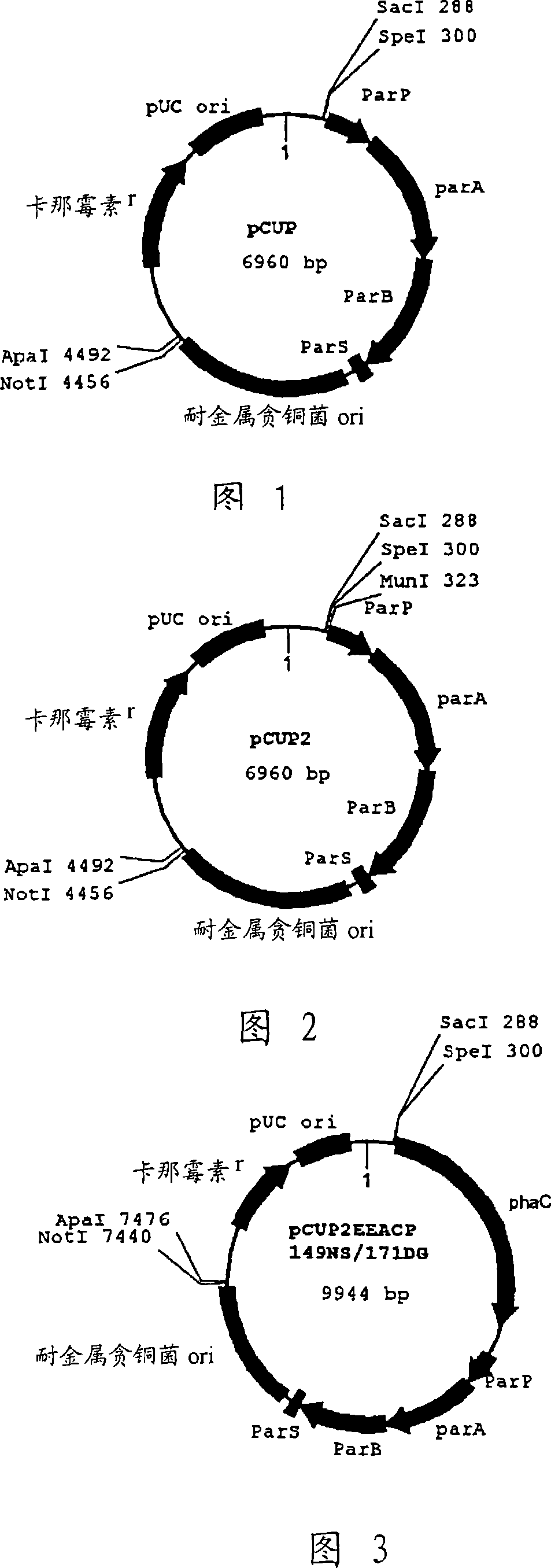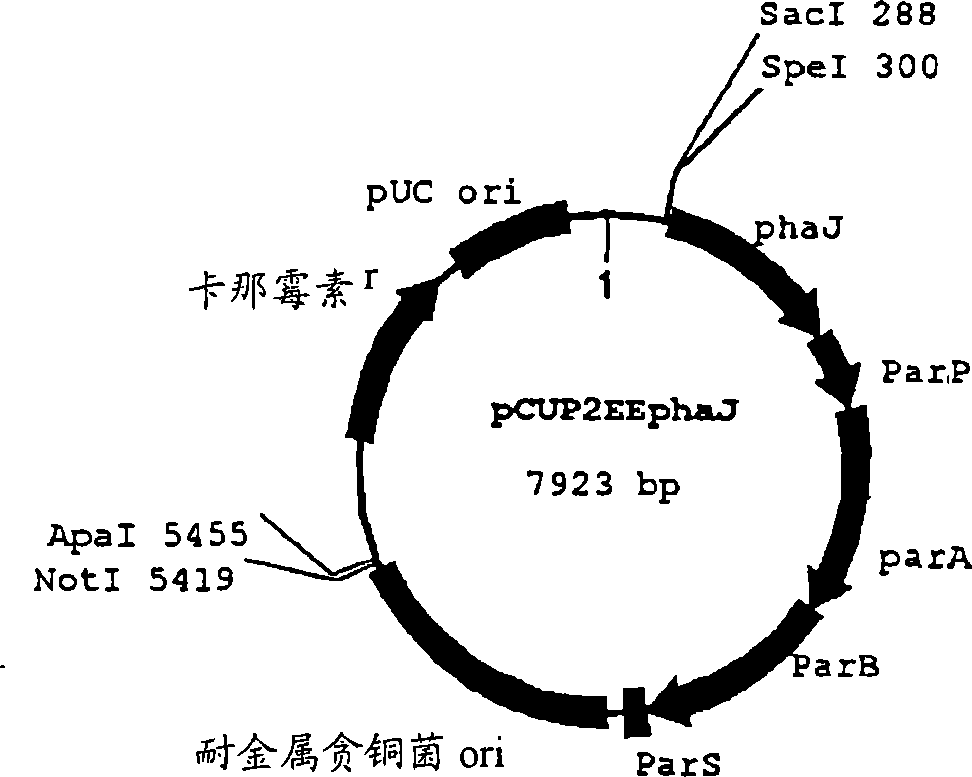Novel plasmid vector and transformant capable of carrying plasmid stably
A transformant and stabilization technology, applied in the direction of using vectors to introduce foreign genetic material, botany equipment and methods, biochemical equipment and methods, etc., can solve unclear construction methods of plasmid stabilization, environmental hazards, and antibiotics to increase production costs And other issues
- Summary
- Abstract
- Description
- Claims
- Application Information
AI Technical Summary
Problems solved by technology
Method used
Image
Examples
Embodiment 1
[0079] Embodiment 1: Preparation of plasmid vector pCUP
[0080] The plasmid vector introduced with the replication origin region and par region in this Example is not limited as long as it can be used in bacteria belonging to the genus Ralstia. The plasmid vector prepared in this example used the replication initiation region (SEQ ID NO: 7) and the par region described in SEQ ID NO: 8 of the giant plasmid (pMOL28) possessed by C. metalloreta CH34 strain.
[0081] The specific operating procedures are as follows: first, use the DNA Purification Kit (manufactured by Promega) to prepare the DNA containing the giant plasmid from the C. metalloreta CH34 strain, and use the DNA as a template to pass through the primers described in SEQ ID NO: 1 and 2. The PCR method amplifies a DNA region of about 4 kbp containing the sequences of SEQ ID NO:7 and 8. PCR conditions are (1) 98°C, 2 minutes, (2) 98°C, 30 seconds, (3) 55°C, 30 seconds, (4) 72°C, 5 minutes, 30 cycles from (2) to (4) ...
Embodiment 2
[0083] Embodiment 2: Preparation of plasmid vector pCUP2
[0084] In order to facilitate gene introduction into the plasmid vector of the present invention, a restriction endonuclease MunI site was further introduced into pCUP obtained in Example 1. Concrete operating procedure is as follows: at first use the primer described in SEQ ID NO:5 and 6 to carry out PCR with the pCUP prepared in the embodiment 1 as template by PCR method, amplified fragment is passed DNA ligase (Ligation High (manufactured by Toyobo Co., Ltd.) )) connection to introduce the MunI site to prepare pCUP2 as shown in Figure 2. PCR conditions are (1) 98°C, 2 minutes, (2) 98°C, 30 seconds, (3) 55°C, 30 seconds, (4) 72°C, 5 minutes, 30 cycles from (2) to (4) . As the polymerase, TaKaRa Pyrobest DNA Polymerase (manufactured by Takara Corporation) was used.
[0085] In this way, a plasmid vector containing the DNA region shown in SEQ ID NO: 18 and the DNA region shown in SEQ ID NO: 19 and not containing c...
Embodiment 3
[0086] Embodiment 3: Prepare transformant with plasmid vector pCUP2
[0087] Transformation was performed using electroporation as described below. The gene introduction device used for electroporation used Gene Pulser manufactured by Biorad Company, and the transformation cup was also manufactured by Biorad Company, and the gap was 0.2 cm (gap0.2 cm). Inject 400 μl of competent cells of the Ralstonia eutropha H16 strain and 5 μl of plasmid pCUP2 preparation solution into the transformation cup, put them into the pulse device, and apply electric pulses under the conditions of electrostatic capacitance 25 μF, voltage 1.5 kV, and resistance value 800 Ω. After the pulse, the bacterial solution in the transformation cup was shaken at 30° C. for 3 hours in the Nutrient Broth medium (manufactured by DIFCO), and a selection plate (Nutrient Agar medium (manufactured by DIFCO) containing 100 mg / L kanamycin ) were cultured at 30° C. for 2 days to obtain transformants.
PUM
 Login to View More
Login to View More Abstract
Description
Claims
Application Information
 Login to View More
Login to View More - R&D
- Intellectual Property
- Life Sciences
- Materials
- Tech Scout
- Unparalleled Data Quality
- Higher Quality Content
- 60% Fewer Hallucinations
Browse by: Latest US Patents, China's latest patents, Technical Efficacy Thesaurus, Application Domain, Technology Topic, Popular Technical Reports.
© 2025 PatSnap. All rights reserved.Legal|Privacy policy|Modern Slavery Act Transparency Statement|Sitemap|About US| Contact US: help@patsnap.com



